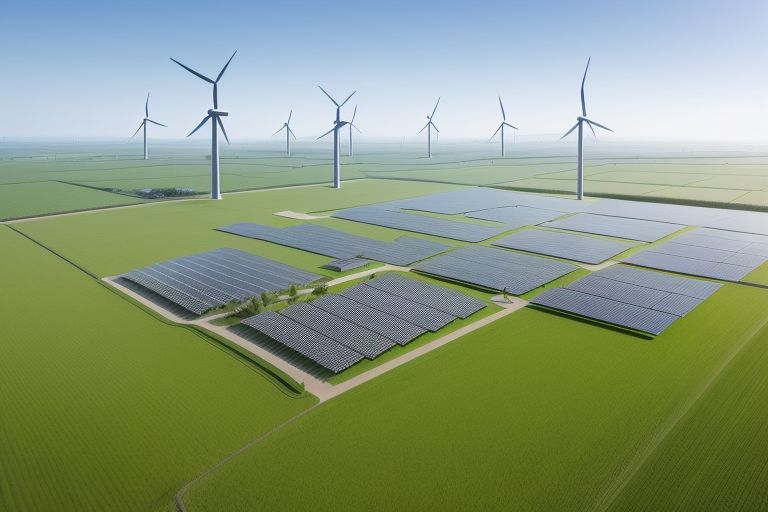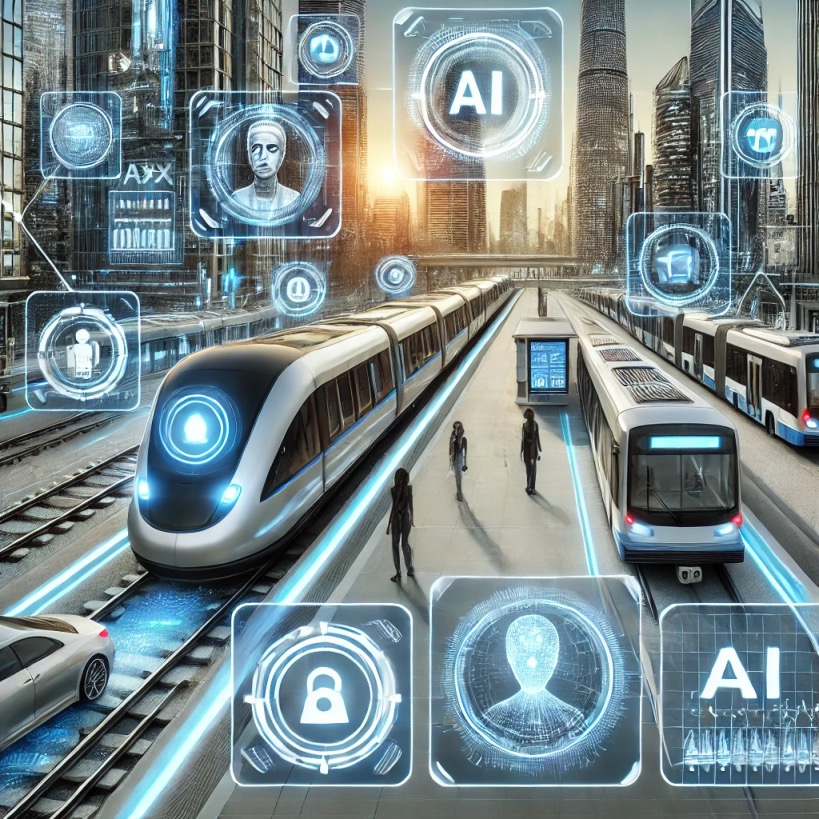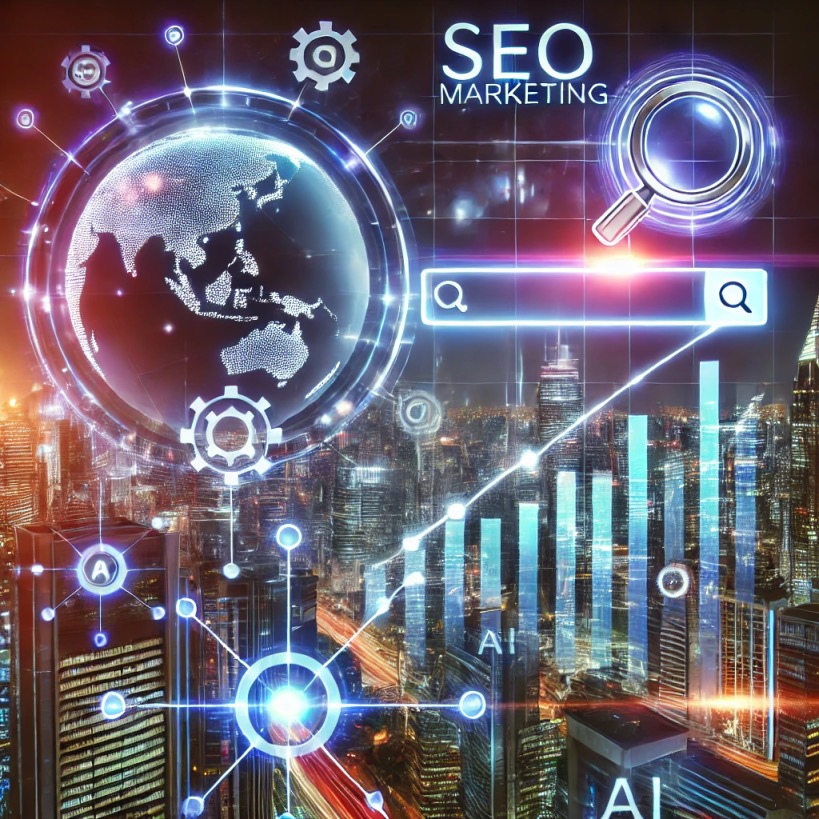The global energy landscape is undergoing a profound transformation as the world shifts toward cleaner, more efficient, and renewable sources of power. Driven by the urgent need to combat climate change, reduce greenhouse gas emissions, and meet growing energy demands, this transition represents one of the most significant challenges and opportunities of our time. From solar and wind power to advanced energy storage systems and smart grids, the future of energy promises to be sustainable, resilient, and equitable.
Below is an exploration of the key trends, benefits, challenges, and implications of clean, efficient, and renewable energy systems, as well as their impact on the environment, economy, and society.

1. The Shift to Renewable Energy Sources
a. Solar Power
- Photovoltaic (PV) Technology : Solar panels convert sunlight directly into electricity, with costs plummeting due to advancements in efficiency and manufacturing.
- Concentrated Solar Power (CSP) : Uses mirrors or lenses to focus sunlight, generating heat that drives turbines.
- Floating Solar Farms : Installations on reservoirs and lakes reduce land use while improving efficiency through water cooling.

b. Wind Energy
- Onshore Wind : Cost-effective turbines harness wind power in rural and coastal areas.
- Offshore Wind : Turbines installed in oceans capture stronger, more consistent winds, with innovations like floating platforms expanding deployment options.
- Micro-Wind : Small-scale turbines provide localized energy solutions for homes and businesses.
c. Hydropower
- Traditional Dams : Large-scale hydropower remains a reliable source of renewable energy.
- Small-Scale and Run-of-River Systems : Minimize environmental impacts while providing decentralized energy.
d. Emerging Renewables
- Geothermal Energy : Taps into Earth’s internal heat for electricity and heating.
- Tidal and Wave Energy : Harnesses ocean movements for predictable, renewable power.
- Bioenergy : Converts organic materials into biofuels, biogas, and electricity.
2. Advancements in Energy Efficiency

a. Smart Grids
- Dynamic Load Management : Real-time monitoring and adjustments optimize energy distribution and reduce waste.
- Demand Response : Consumers adjust usage during peak times, incentivized by variable pricing.
b. Energy-Efficient Buildings
- Net-Zero Homes : Combine renewable energy generation with ultra-efficient designs to produce as much energy as they consume.
- Smart Appliances : IoT-enabled devices optimize energy use based on user habits and grid conditions.
c. Industrial Efficiency
- Process Optimization : AI and machine learning streamline manufacturing processes, reducing energy consumption.
- Waste Heat Recovery : Captures and repurposes heat from industrial operations.
3. Breakthroughs in Energy Storage
a. Battery Technologies
- Lithium-Ion Batteries : Widely used for electric vehicles (EVs) and grid storage, with ongoing improvements in capacity and lifespan.
- Solid-State Batteries : Offer higher energy density, faster charging, and improved safety.
- Flow Batteries : Ideal for large-scale storage, using liquid electrolytes for long-duration applications.
b. Alternative Storage Solutions
- Green Hydrogen : Produced via electrolysis using renewable energy, hydrogen serves as a versatile fuel for transportation, industry, and grid balancing.
- Pumped Hydro Storage : Uses excess energy to pump water uphill, releasing it later to generate electricity.
- Thermal Storage : Stores heat or cold for later use in heating, cooling, or power generation.
4. Benefits of Clean, Renewable Energy
a. Environmental Impact
- Reduced Emissions : Transitioning to renewables significantly cuts carbon dioxide and other pollutants, mitigating climate change.
- Biodiversity Protection : Cleaner energy reduces habitat destruction and pollution caused by fossil fuel extraction.
b. Economic Growth
- Job Creation : The renewable energy sector generates millions of jobs in manufacturing, installation, maintenance, and research.
- Energy Independence : Nations reduce reliance on imported fuels, enhancing security and economic stability.
c. Public Health
- Improved Air Quality : Lower emissions decrease respiratory and cardiovascular diseases linked to air pollution.
- Healthcare Savings : Reduced pollution leads to lower healthcare costs and increased productivity.
d. Resilience and Accessibility
- Decentralized Systems : Distributed energy resources (DERs) empower communities to generate their own power, especially in remote areas.
- Disaster Preparedness : Microgrids and battery storage ensure continuity during natural disasters or grid failures.
5. Challenges and Risks
a. Intermittency
- Solar and wind power depend on weather conditions, requiring robust storage and backup systems to ensure reliability.
b. Infrastructure Upgrades
- Modernizing grids and building new transmission lines are costly and face regulatory hurdles.
c. Resource Constraints
- Mining rare earth metals for batteries and solar panels raises environmental and ethical concerns.
d. Policy and Financing
- Inconsistent government policies and insufficient funding can slow the adoption of renewable technologies.
e. Social Equity
- Ensuring affordable access to clean energy for low-income communities remains a challenge.
6. Real-World Examples
a. Denmark’s Wind Leadership
- Generates over 50% of its electricity from wind power, aiming for 100% renewable energy by 2050.
b. Tesla’s Energy Innovations
- Produces EVs, solar panels, and the Powerwall battery, driving adoption of integrated renewable solutions.
c. China’s Solar Boom
- Leads the world in solar panel production and installation, contributing to massive reductions in global costs.
d. Germany’s Energiewende
- A national initiative transitioning to renewables, with ambitious targets for emissions reduction.
e. Kenya’s Geothermal Success
- Utilizes geothermal energy to provide reliable, low-cost electricity to millions.
7. Emerging Trends in the Energy Sector
a. Decentralization
- Peer-to-peer energy trading platforms enable households and businesses to buy and sell excess power.
b. Electrification of Transportation
- EVs, electric buses, and trains replace fossil-fuel-powered vehicles, supported by widespread charging infrastructure.
c. Carbon Capture and Utilization
- Technologies capture CO2 emissions for reuse in products like concrete, plastics, and synthetic fuels.
d. AI and Big Data
- Predictive analytics optimize energy production, consumption, and grid management.
e. Green Finance
- Investments in sustainable projects grow through mechanisms like green bonds and ESG (Environmental, Social, Governance) criteria.
8. Broader Implications for Society
a. Climate Action
- Accelerating the transition to renewables is critical to achieving international climate goals, such as those outlined in the Paris Agreement.
b. Technological Innovation
- Cross-disciplinary advances in materials science, AI, and engineering drive breakthroughs across industries.
c. Global Collaboration
- International partnerships foster knowledge sharing, technology transfer, and joint investments in clean energy.
d. Cultural Shifts
- Growing awareness of sustainability encourages individuals and organizations to adopt greener practices.
9. The Future Vision of Energy
The future of energy envisions a world powered entirely by clean, renewable sources, with seamless integration of efficiency and innovation:
a. Universal Access
- Affordable, reliable energy reaches every corner of the globe, empowering underserved populations.
b. Carbon Neutrality
- Economies achieve net-zero emissions, reversing decades of environmental damage.
c. Smart Cities
- Urban centers leverage interconnected systems to optimize energy use, transportation, and resource management.
d. Circular Economy
- Waste is minimized, and resources are reused, creating a closed-loop system for energy and materials.
10. Conclusion
The future of energy is bright, driven by the convergence of clean, efficient, and renewable technologies that promise to reshape our world. By embracing these innovations, we can address the pressing challenges of climate change, energy poverty, and environmental degradation while unlocking unprecedented opportunities for growth and prosperity.
However, realizing this vision requires bold leadership, sustained investment, and collective action. Governments, businesses, and individuals must work together to overcome barriers and ensure that the benefits of clean energy are shared equitably.
As we chart the course toward a sustainable energy future, one thing is clear: the choices we make today will define the legacy we leave for generations to come. The journey to a cleaner, greener planet has only just begun—and the possibilities are limitless.



